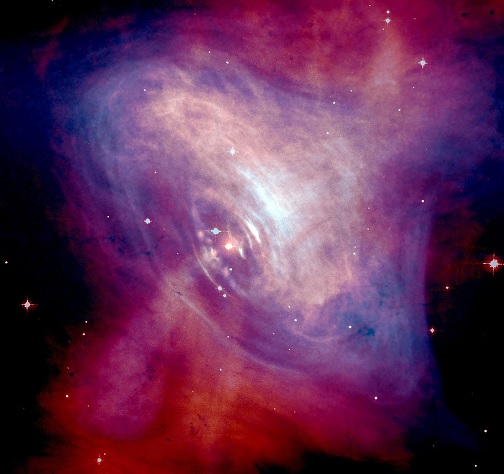
Developing a GPS for space travel
The National Physical Laboratory and University of Leicester have made strides in the future of space travel by demonstrating how pulsars can be used to obtain position along a particular direction in space to an accuracy of 1.5 miles.
Current large ground-based technology is limited by cost and number of spacecraft it can track, but the new method operates autonomously, increasing the number and capabilities of space missions.

“Our capability to explore the solar system has increased hugely over the past few decades; missions like Rosetta and New Horizons are testament to this. Yet how these craft navigate will in future become a limiting factor to our ambitions. The cost of maintaining current large ground-based communications systems based on radio waves is high and they can only communicate with a small number of craft at a time,” said Dr. Setnam Shemar, Senior Research Scientist, NPL. “Using pulsars as location beacons in space, together with a space atomic clock, allows for autonomy and greater capability in the outer solar system. The use of these dead stars in one form or another has the potential to become a new method for navigating in deep space and, in time, beyond the solar system.”
The research showed that a spacecraft’s position in space in the direction of a particular pulsar, a dead star that emits radiation in the form of X-rays and other electromagnetic waves, can be calculated autonomously using a small X-ray telescope on board the craft. The method employs X-rays that are emitted from pulsars, which can be used to work out the position of a craft in space in 3D to an accuracy of 19 miles at the distance of Neptune.
For a particular type of pulsar, called ‘millisecond pulsars’, the pulses of radiation occur with the regularity and precision of an atomic clock and could be used much like GPS in space.
Although most X-ray telescopes are large and would allow for much more accuracy, in testing the team focused on technology that could be small and light enough to be developed in the future as part of a practical spacecraft subsystem.
This technique is an improvement on the current navigation methods of the ground-based Deep Space Network (DSN) and European Space Tracking (ESTRACK) network since it can operate autonomously with no need for any intervention from Earth for months or even years, if an advanced atomic clock is also on the craft.
“Up until now, the concept of pulsar-based navigation has been seen just as that – a concept. This simulation uses technology in the real world and proves its capabilities for this task,” said Dr. John Pye, Space Research Centre Manager, University of Leicester Our X-ray telescope can be feasibly launched into space due to its low weight and small size; indeed, it will be part of a mission to Mercury in 2018. NPL’s timing analysis capability has been developed over many years due to its long heritage in atomic clocks. We are entering a new era of space exploration as we delve deeper into our solar system, and this paper lays the foundations for a potential new technology that will get us there.”

Comments are closed, but trackbacks and pingbacks are open.